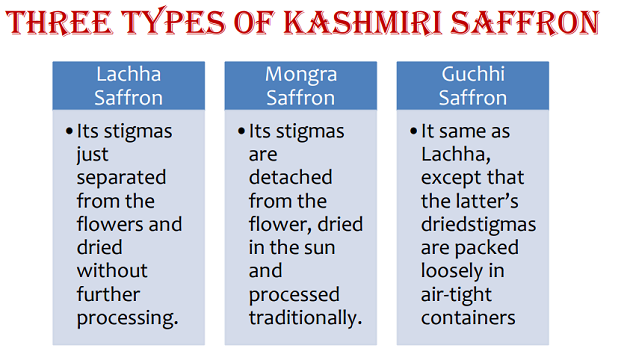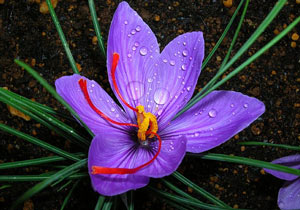- Home
- Prelims
- Mains
- Current Affairs
- Study Materials
- Test Series
 EDITORIALS & ARTICLES
EDITORIALS & ARTICLES
News Information Bureau | 26th July 2020
India-EU renew agreement on S&T cooperation
India and European Union have renewed its Agreement on Scientific and Technological Cooperation for the next five years (2020-25).
 Kashmir Saffron
Kashmir Saffron

- The Agreement was initially signed in on 23 November 2001 and renewed two times in past in 2007 and 2015.
- This will expand the cooperation in scientific and technological research strengthen the conduct of cooperative activities in areas of common interest and application of the results of such cooperation to their economic and social benefit.
- Cooperative activities may take the forms of reciprocal participation of Indian research and European research entities in research, technological development, and demonstration projects under each other programme.
- India and European Union have strong research and innovation cooperation under the framework of said “Agreement,” and it has grown steadily over the years.
- In the last 5 years, the level of co-investment on India-EU Research Technology Development Projects for addressing societal challenges such as affordable healthcare, water, energy, food & nutrition has been stepped up resulted in several technologies, patents development, their gainful utilisation, joint research publications, sharing of research facility and, exchange of scientists and students from both sides.
- The cooperation has been focused on water, green transport, e-mobility, clean energy, circular economy, bio-economy, health, and ICT. Additional areas, such as climate change, sustainable urban development, manufacturing, advanced materials, nanotechnologies and biotechnology, food processing, and ocean research may also be considered in future endeavours.
- The EU and India are at the forefront of human development and innovation. For India, addressing the basic needs of its people, including through frugal innovation, and excelling in high-tech markets are twin objectives. Both areas offer mutually beneficial opportunities for EU-India cooperation. Increased exchanges between students, researchers, and professionals would benefit both sides. India and the EU share a mutual interest in reciprocal mobility of talent.
- The EU-India cooperation should also foster innovation by promoting networking between EU and Indian innovators, start-ups, incubators, and accelerators, by setting up joint platforms, both offline and virtual, and engaging in coaching, training and staff exchanges.
- Highly qualified workers could be integrated into Indian and EU-led innovation systems industries and help maintain technology-based leadership and sharing of best practices, internationalisation of SMEs, and contributing in the global value chain.
- Pradhan Mantri Van Dhan Yojana (PMVDY) is a retail marketing led value addition plan for Minor Forest Produce (MFP), meant for forest-based tribes to optimise the tribal income, locally.
- Under the program, MFP-based tribal groups/enterprises of around 300 members are formed for collection, value addition, packaging & marketing of Minor Forest Produces (MFPs).
- These tribal enterprises will be in the form of Van Dhan SHGs which will be a group of 15-20 members and such 15 SHG groups will further be federated into a larger group of Van Dhan Vikas Kendras (VDVKS) of around 300 members.
- TRIFED will support the VDVKs through providing them with model business plans, processing plans & tentative list of equipment for carrying out the value addition work of MFPs.
- It is aimed at providing rural India with professional resource support from institutes of higher education to address the development challenges through appropriate technologies.
- It aims to link the Higher Education Institutions with at least (5) villages, to enable the institutions contribute to the economic and social betterment of these village communities using their knowledge base.
- Each selected institute would adopt a cluster of villages/panchayats and gradually expand the outreach over a period.
- IIT Delhi has been designated to function as the National Coordinating Institute for this program.
- HRD along with the Ministries of Rural Development and Panchayati Raj has agreed to link all Higher Education Institutes (HEIs) with rural development processes under Unnat Bharat Abhiyan (UBA).
 Kashmir Saffron
Kashmir Saffron
- Kashmir saffron is renowned globally as a spice.
- It rejuvenates health and is used in cosmetics and for medicinal purposes.

- It has been associated with traditional Kashmiri cuisine and represents the rich cultural heritage of the region.
- The unique characteristics of Kashmir saffron are its longer and thicker stigmas, natural deep-red colour, high aroma, bitter flavour, chemical-free processing, and high quantity of crocin (colouring strength), safranal (flavour) and picrocrocin (bitterness).
- It is the only saffron in the world grown at an altitude of 1,600 m to 1,800 m AMSL (above mean sea level), which adds to its uniqueness and differentiates it from other saffron varieties available the world over.
- The saffron available in Kashmir is of three types — ‘Lachha Saffron’, with stigmas just separated from the flowers and dried without further processing; ‘Mongra Saffron’, in which stigmas are detached from the flower, dried in the sun and processed traditionally; and ‘Guchhi Saffron’, which is the same as Lachha, except that the latter’s dried stigmas are packed loosely in air-tight containers while the former has stigmas joined together in a bundle tied with a cloth thread.
- Saffron cultivation is believed to have been introduced in Kashmir by Central Asian immigrants around 1st Century BCE. In ancient Sanskrit literature, saffron is referred to as ‘bahukam’.
- The researchers found that calves develop a laterality in the way they use their trunks from three months onwards. They are more or less fixed in this laterality by the time they are a year old.
- This study, tracing out how this behaviour develops as the calf grows, is a first-of-its-kind study of free ranging Asian elephants (Elephas maximus). The results have been published in The International Journal of Developmental Biology.
- Unlike humans, where right-handedness dominates, elephants do not show a bias in this behaviour at the population level: Asian elephants are equally likely to show left-handedness as they are to show right-handedness.
- The researchers found that trunk motor control develops postnatally over months although limb motor control and trunk side preference is achieved within a few hours of birth.
- India is the natural home of the largest population of Asian elephants. It is also found in Nepal, Bangladesh, Bhutan and Myanmar.
- It usually resides in shrublands, artificial/terrestrial forests and grasslands.
- It is listed as ‘Endangered’ on the IUCN Red List of threatened species. It is also listed in Appendix I of the Convention on International Trade in Endangered Species of Wild Fauna and Flora (CITES) and Schedule I of the Wildlife (Protection) Act, 1972.
- The earliest indications of captive use of Asian elephants are engravings on seals of the Indus Valley Civilisation dated to the 3rd millennium BC.









 Latest News
Latest News General Studies
General Studies